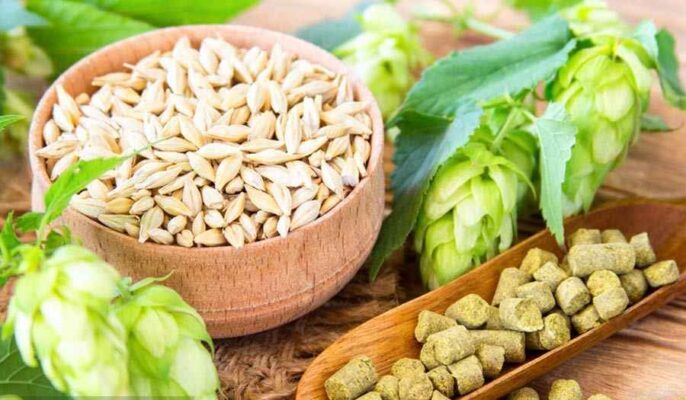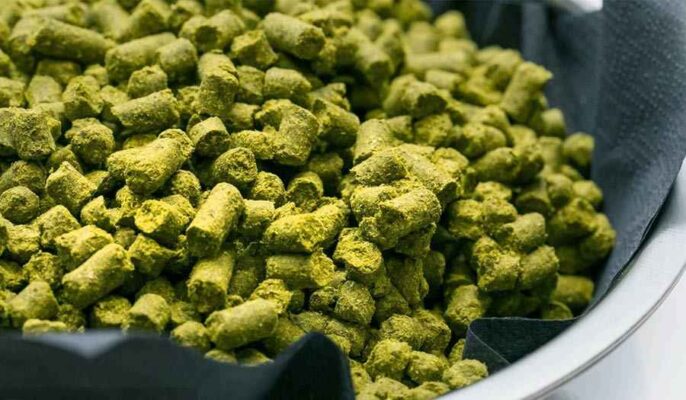There are various ways to add hops during the brewing process. Dry hopping is the process of adding hops to beer at some point after fermentation has begun. Adding hops gives the beer a fresh hop aroma without adding any bitterness. It also adds a unique flavor profile.
What is dry hopping?
Dry hopping is the process of adding hops as a cold topping. Usually added during or immediately after primary fermentation is complete. Dry hopping adds aroma and flavor without imparting any bitterness to your beer.
Hops contain compounds called alpha acids. When alpha acids are heated during boiling, they undergo a process called isomerization. Isomerized alpha acids provide hop bitterness in beer.
Dry hopping preserves the delicate volatile oils that create flavor and aroma, and imparts a satisfying aroma to the beer.

Right time to add hops
The correct time to add hops to the fermenter is when fermentation starts to slow down. This is usually evident as the head (or Clausen) begins to decrease, which usually coincides with a decrease in air bubbles in the airlock. this is three to four days after fermentation begins. If you use a single stage fermenter, add hops. If you use a secondary fermenter, rack the beer immediately, then add the dry hops to the secondary fermenter.
The wrong time to add hops is at or near the start of fermentation. Hops are not a sterile product and adding hops too early can lead to contamination of the beer.
Pellet hops or whole hops?
The method of dry hopping depends on the type of hops used, and the location of the dry hop. When it comes to dry hops, there are some major differences between using pellet hops and using whole hops. The pelleted hops float on the surface and will sink to the bottom.
All the hop oils can go into the beer with the granules almost immediately, and if using whole hops it can take a week or two to release a fair amount of oil.
Note on using pellets: Sometimes adding pellets may push the fermentation into a higher gear for a period of time. While this is sometimes a result of waking up the yeast when stirring in the pellets, it’s likely CO2 being released. The particles become thousands of bubble nucleation sites and cause large amounts of CO to escape from solution. So be prepared for this!
Common Methods of Dry Hoping
The French Press
This dry-hopping technique isn’t ideal, but it can determine which aroma compounds are right for a certain type of beer. If you brew a pale ale and consider using dry hops next time. Add some pale ale to some grain hops in the French press and give it some contact time.
Barrel jump
This is a great variation of dry hopping, where the hops are added to hop bags or tea strainers and then added to the keg. This method does impart a distinct hop aroma, and since the filter will be located next to the beer spout, some of the beer will pass right through the bag to your glass, resulting in a very fresh taste.

Early Stage Dry Casting
Most homebrewers respond less to the primary stage than to the secondary dry pitch. The theory is that primary dry-hopping allows the carbon dioxide bubbles to strip aroma compounds from the beer. But the truth is, while primary hops do change the aroma profile, the true mechanism by which this happens is not understood.
The aroma compounds in hops are contained in hop oil, which are not volatile enough to be carried away by carbon dioxide bubbles. The only reason they dissipate in a boil is because they are boiled. The craft is seeing some experiments at home brewing and commercial brewing levels, but has not yet caught on.
When to Add Bitter Hops?
Once the wort has collected in the pot (or after adding the malt extract) and has reached a boil, add the bittering hops. Usually cook for 60 minutes, but some recipes call for 30 minutes. All beers contain some bitter hops. The main reason is that without the hop bitterness, your beer will taste as sweet as syrup. Another bonus is that hops are a natural preservative that can help your beer keep longer or age longer.
When to Add Flavored Hops?
Flavored hops are usually added at the boil for 15 to 30 minutes. During this time, little bitterness is extracted from the hops, but a crisp hop flavor is imparted. Again, these are the same as your bitter or aromatic hops, it’s the time they’re boiled that makes the difference.
When to Add Aroma Hops?
The aroma-producing hop oil is volatile and disappears almost immediately in the steam of the boil. So, aroma hops should not be boiled for a long time. They are usually added during the last 5 minutes of boiling or when you take off the heat. Adding hops while off the flame produces the greatest amount of aroma.




